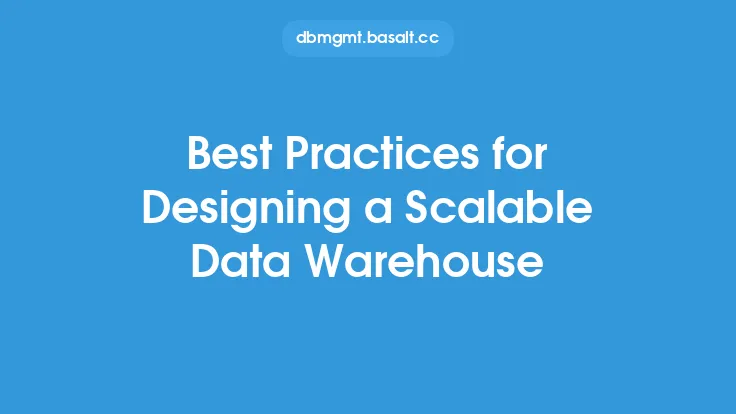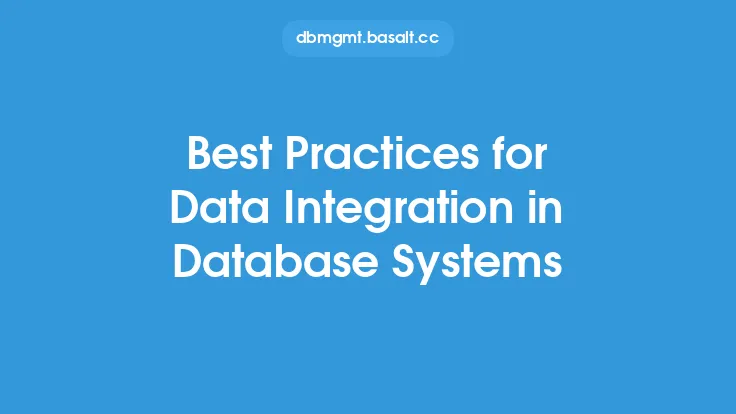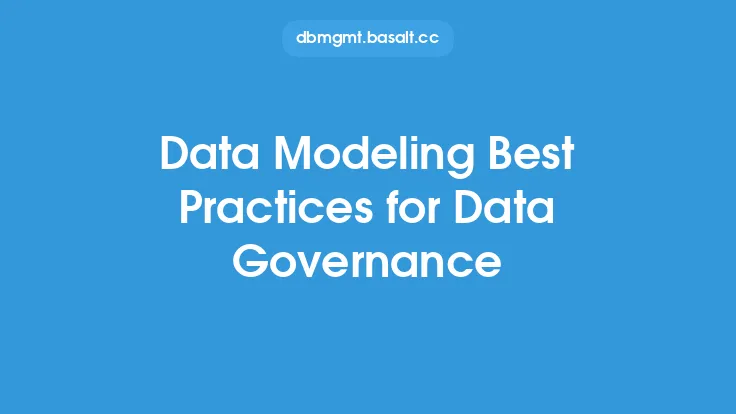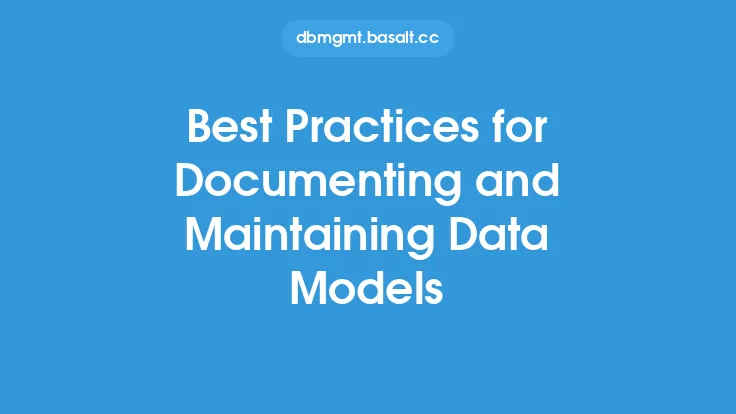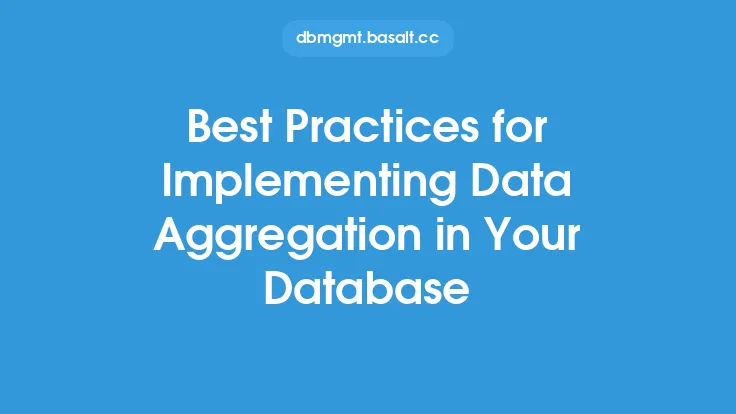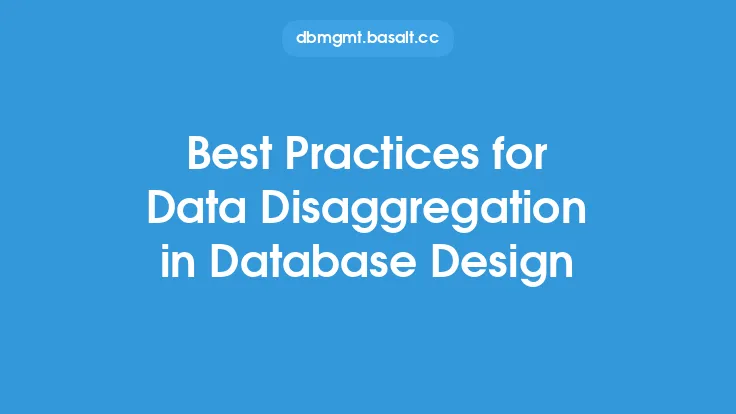When dealing with sensitive data, it's crucial to implement robust security measures to protect it from unauthorized access. Data masking is a technique used to conceal sensitive information by replacing it with fictional but realistic data, making it an essential aspect of database security. To ensure the effective use of data masking, it's vital to follow best practices that guarantee the security and integrity of sensitive data.
Introduction to Data Masking Best Practices
Data masking best practices are guidelines that help organizations implement data masking effectively, ensuring that sensitive data is protected without compromising its usability. These best practices involve a combination of technical, procedural, and administrative controls that work together to prevent unauthorized access to sensitive data. By following these best practices, organizations can minimize the risk of data breaches and ensure compliance with regulatory requirements.
Identifying Sensitive Data
The first step in implementing data masking best practices is to identify sensitive data. This involves categorizing data into different levels of sensitivity, such as public, internal, confidential, and restricted. Sensitive data can include personal identifiable information (PII), financial information, health records, and other confidential data. Once sensitive data is identified, it's essential to apply data masking techniques to conceal it from unauthorized access.
Data Masking Techniques
There are several data masking techniques that can be used to conceal sensitive data, including substitution, encryption, and tokenization. Substitution involves replacing sensitive data with fictional but realistic data, while encryption involves converting sensitive data into an unreadable format using algorithms and keys. Tokenization involves replacing sensitive data with tokens or placeholders that can be mapped back to the original data. The choice of data masking technique depends on the type of data, its sensitivity, and the intended use of the masked data.
Data Masking Policies
Data masking policies are essential in ensuring that sensitive data is handled consistently across the organization. These policies should outline the procedures for identifying sensitive data, applying data masking techniques, and managing access to masked data. Data masking policies should also include guidelines for data retention, data disposal, and incident response in case of a data breach. By having a clear data masking policy, organizations can ensure that sensitive data is protected and that all stakeholders understand their roles and responsibilities in maintaining data security.
Access Control and Authentication
Access control and authentication are critical components of data masking best practices. Access control involves restricting access to sensitive data to authorized personnel only, while authentication involves verifying the identity of users before granting access to masked data. Organizations should implement role-based access control, where access to sensitive data is granted based on a user's role or job function. Additionally, organizations should use multi-factor authentication to ensure that only authorized users can access masked data.
Data Masking for Different Data Types
Different data types require different data masking techniques. For example, numerical data such as credit card numbers and social security numbers require substitution or encryption, while text data such as names and addresses require tokenization or encryption. Organizations should also consider the format of the data, such as dates and timestamps, when applying data masking techniques. By using the right data masking technique for each data type, organizations can ensure that sensitive data is protected without compromising its usability.
Data Masking in Cloud Environments
Data masking in cloud environments requires special consideration. Cloud environments are multi-tenant, meaning that multiple organizations share the same infrastructure, which increases the risk of data breaches. To mitigate this risk, organizations should use cloud-based data masking solutions that provide an additional layer of security and control. These solutions should include features such as encryption, access control, and auditing to ensure that sensitive data is protected in the cloud.
Auditing and Monitoring
Auditing and monitoring are essential components of data masking best practices. Organizations should regularly audit and monitor access to masked data to detect and respond to potential security incidents. Auditing involves tracking and logging all access to sensitive data, while monitoring involves real-time analysis of access patterns to detect anomalies. By auditing and monitoring access to masked data, organizations can ensure that sensitive data is protected and that any security incidents are responded to promptly.
Training and Awareness
Training and awareness are critical components of data masking best practices. Organizations should provide regular training to employees on data masking policies and procedures to ensure that they understand their roles and responsibilities in maintaining data security. Additionally, organizations should raise awareness about the importance of data masking and the risks of data breaches to ensure that employees are vigilant and proactive in protecting sensitive data. By providing training and awareness, organizations can ensure that data masking is effective and that sensitive data is protected.
Conclusion
Data masking is a critical aspect of database security that involves concealing sensitive information to protect it from unauthorized access. By following data masking best practices, organizations can ensure that sensitive data is protected without compromising its usability. These best practices involve identifying sensitive data, applying data masking techniques, implementing data masking policies, access control, and authentication, and auditing and monitoring access to masked data. By implementing these best practices, organizations can minimize the risk of data breaches and ensure compliance with regulatory requirements, ultimately protecting sensitive information and maintaining the trust of their customers and stakeholders.
